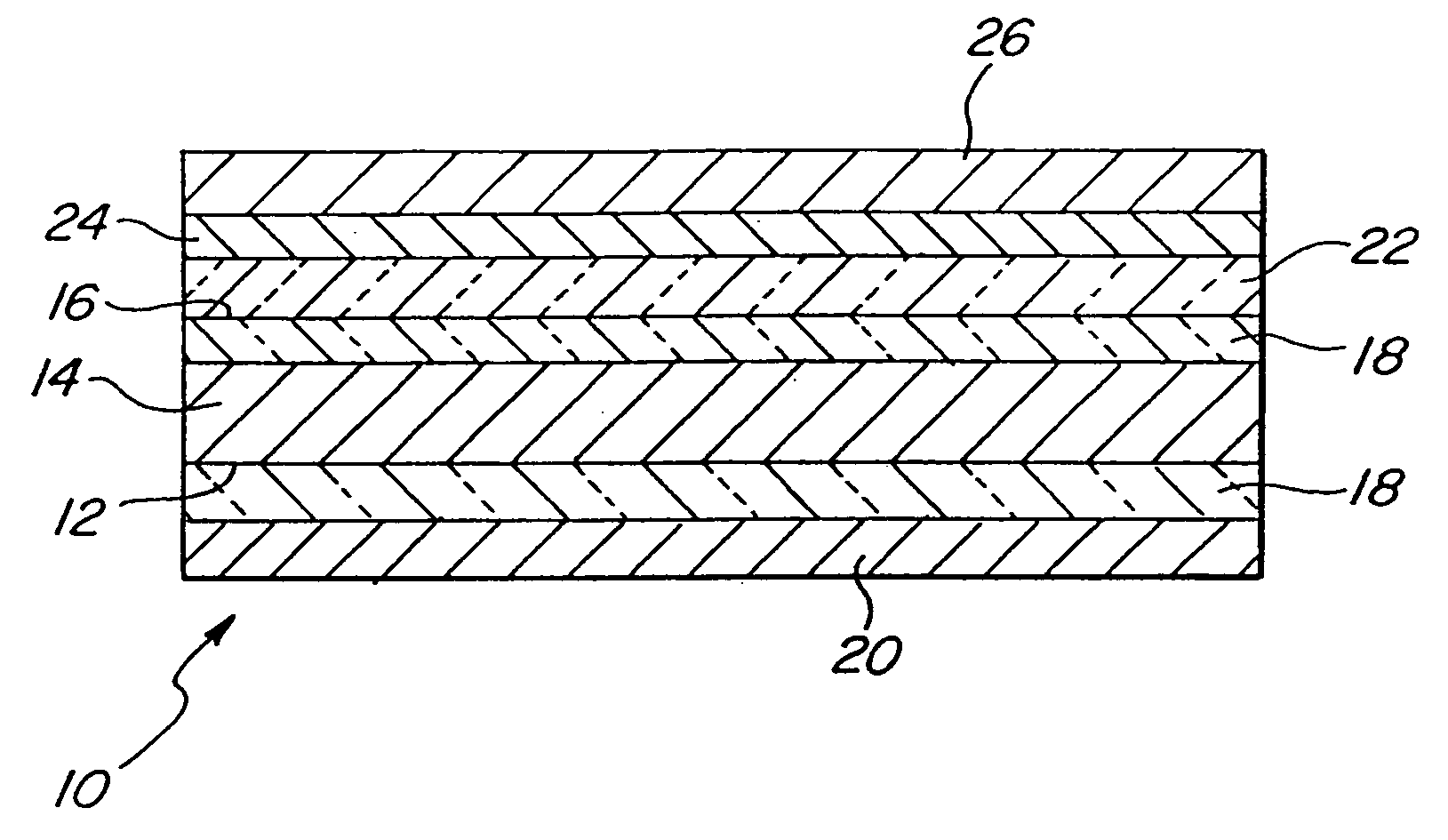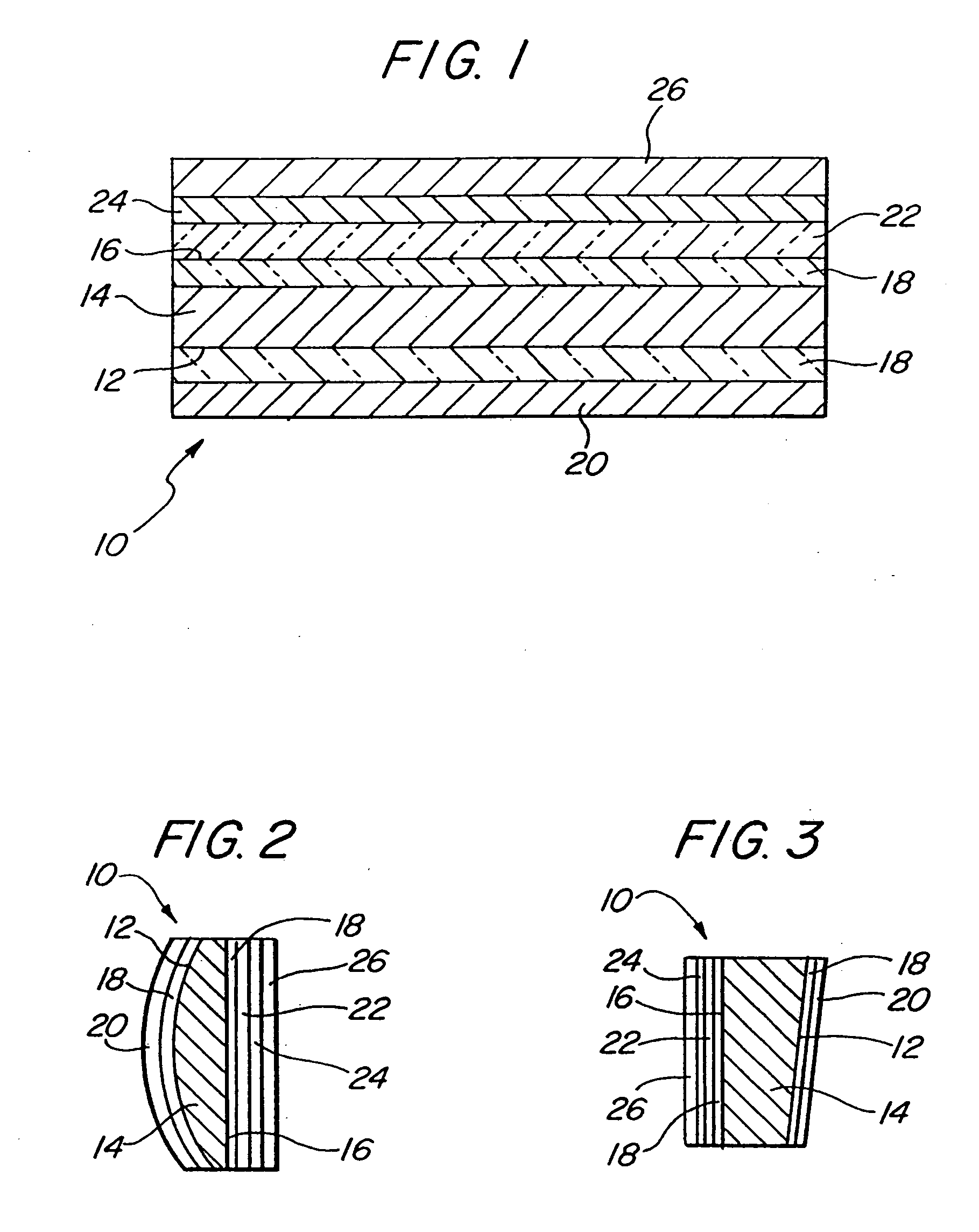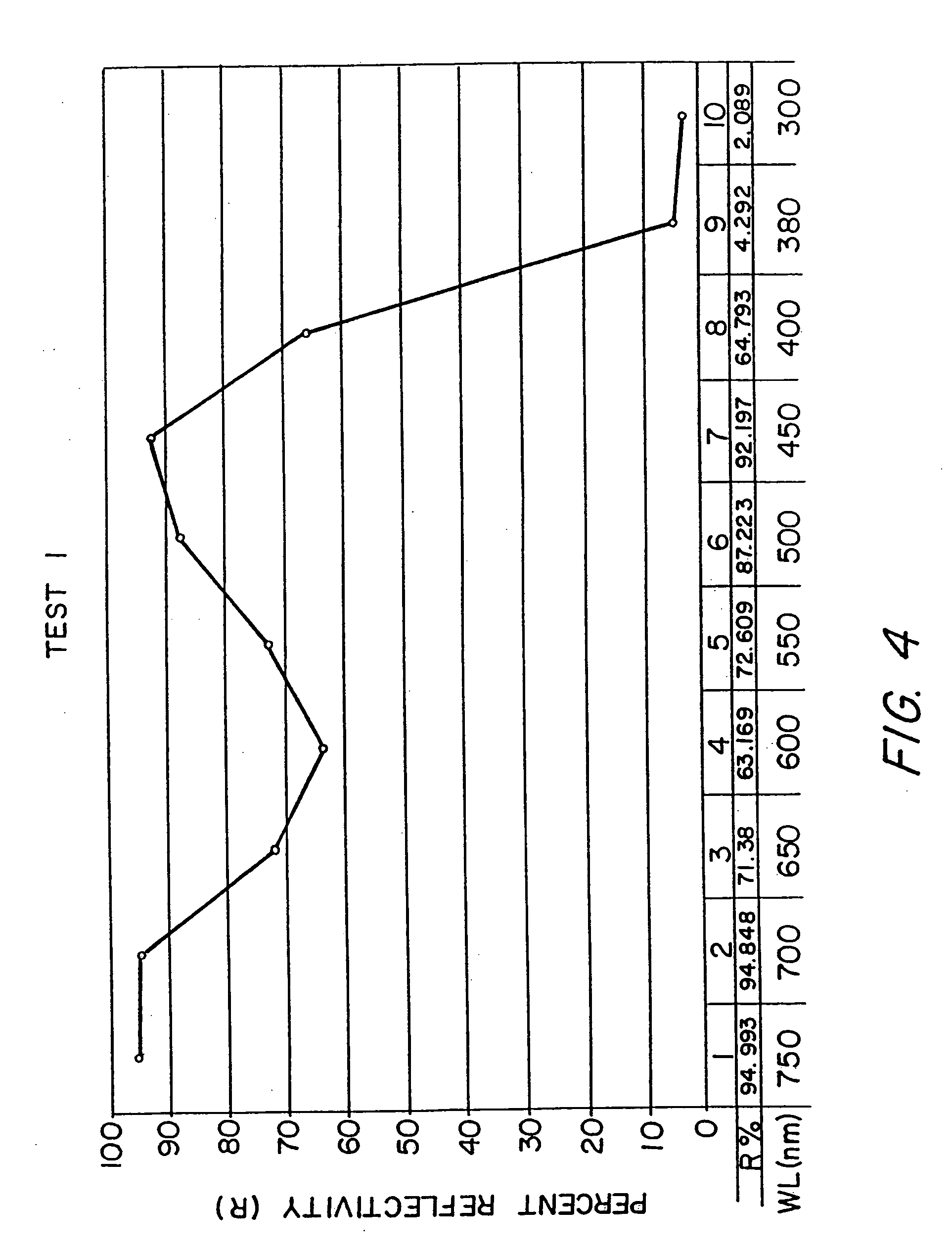Transparent plastic optical components and abrasion resistant polymer substrates and methods for making the same
a technology of transparent plastic and abrasion resistance, applied in the direction of mirrors, instruments, mountings, etc., can solve the problems of corroding the reflective layer by moisture so absorbed, long-term use, etc., and achieves the effects of improving weatherability and durability of the mirror, reducing the risk of corrosion, and being easy to manufacture and us
- Summary
- Abstract
- Description
- Claims
- Application Information
AI Technical Summary
Benefits of technology
Problems solved by technology
Method used
Image
Examples
Embodiment Construction
[0028] The following description is provided to enable any person skilled in the art to make and use the invention and sets forth the best modes contemplated by the inventors of carrying out their invention. Various modifications, however, will remain readily apparent to those skilled in the art, since the general principles of the present invention have been defined herein specifically to provide a coated resin substrate and method of making.
[0029] The present invention is directed to a coated resin substrate such as optical components including polymer-based mirrors which may possess any variety of configurations. For example, as discussed with regard to the several FIGURES, the polymer-based mirror of the present invention can have a wedge-like, curved, toric, planar, or other configuration. The polymer-based mirror can be utilized as an interior or exterior rearview mirror for an automobile. However, it is understood that the polymer-based mirror of the present invention is not...
PUM
| Property | Measurement | Unit |
|---|---|---|
| thickness | aaaaa | aaaaa |
| humidity | aaaaa | aaaaa |
| thickness | aaaaa | aaaaa |
Abstract
Description
Claims
Application Information
 Login to View More
Login to View More - R&D
- Intellectual Property
- Life Sciences
- Materials
- Tech Scout
- Unparalleled Data Quality
- Higher Quality Content
- 60% Fewer Hallucinations
Browse by: Latest US Patents, China's latest patents, Technical Efficacy Thesaurus, Application Domain, Technology Topic, Popular Technical Reports.
© 2025 PatSnap. All rights reserved.Legal|Privacy policy|Modern Slavery Act Transparency Statement|Sitemap|About US| Contact US: help@patsnap.com



